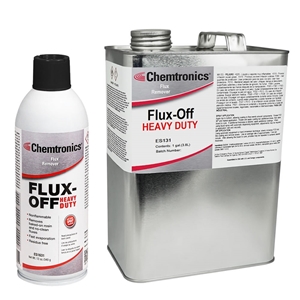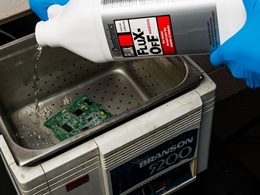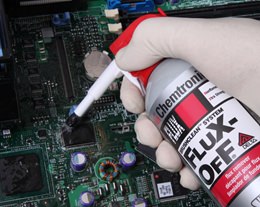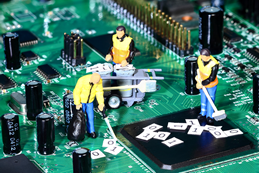Flux-Off Heavy Duty
Heavy-duty flux remover spray for removing encrusted no-clean and rosin flux
Flux-Off® Heavy Duty is an excellent cleaner for the removal of all rosin and no clean flux types from electronic sub-assemblies, printed circuit boards and all other electronic components. Flux-Off® Heavy Duty will remove the toughest deposits of organic flux, soldering oils and organic handling oils. Flux-Off® Heavy Duty will also effectively remove other contaminants such as dirt, grease, and molding compounds.
CLICK HERE FOR FLUX REMOVER SELECTION GUIDE
Note: As with all vapor degreaser equipment and processes, observe all safety precautions, guidelines and operating rules associated with these units. Failure to do so may put operations personnel at risk. Avoid excessive vapor losses, loss of refrigeration, excessive boil sump heat, etc. Make sure all equipment is operated in accordance with the manufacturer’s guidelines and instructions. If in doubt, contact your manufacturer immediately.
Features & Benefits
- Nonflammable
- Quickly removes all rosin and no clean flux types
- Removes encrusted, hard, baked fluxes
- Dries fast
- Leaves no residue
- Noncorrosive
- All-Way Spray valve - even sprays upside down
- NSN# 6850-00-602-2347
Applications
- Ideal nonflammable solution for removing encrusted no-clean and rosin flux
| TDS | |
| REGS | |
| SDS | |
| Categories |
| Specifications | NSN# 6850-00-602-2347 |
| Shelf Life | 2 yrs After Opened |
|---|




